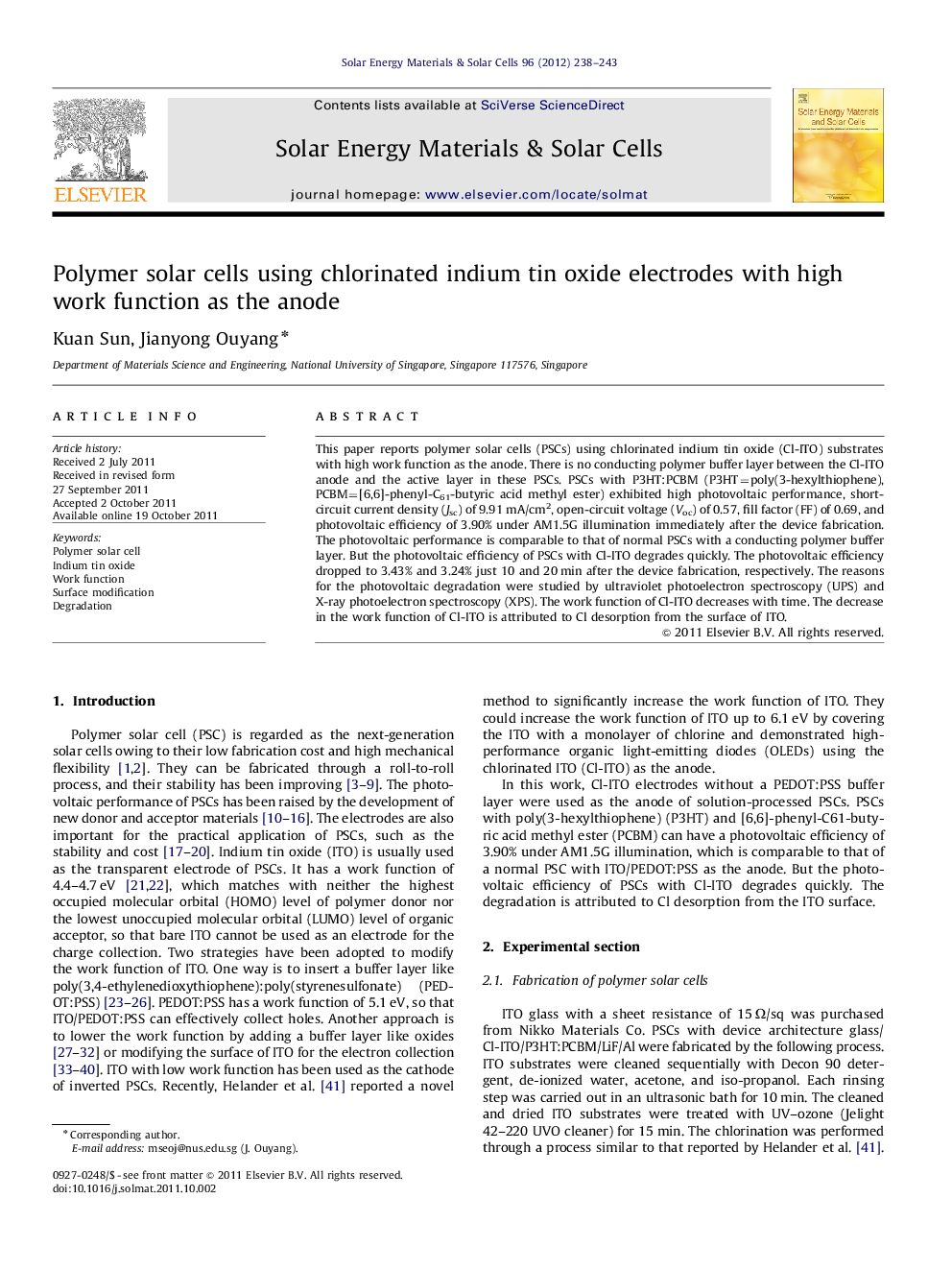| Article ID | Journal | Published Year | Pages | File Type |
|---|---|---|---|---|
| 79492 | Solar Energy Materials and Solar Cells | 2012 | 6 Pages |
This paper reports polymer solar cells (PSCs) using chlorinated indium tin oxide (Cl-ITO) substrates with high work function as the anode. There is no conducting polymer buffer layer between the Cl-ITO anode and the active layer in these PSCs. PSCs with P3HT:PCBM (P3HT=poly(3-hexylthiophene), PCBM=[6,6]-phenyl-C61-butyric acid methyl ester) exhibited high photovoltaic performance, short-circuit current density (Jsc) of 9.91 mA/cm2, open-circuit voltage (Voc) of 0.57, fill factor (FF) of 0.69, and photovoltaic efficiency of 3.90% under AM1.5G illumination immediately after the device fabrication. The photovoltaic performance is comparable to that of normal PSCs with a conducting polymer buffer layer. But the photovoltaic efficiency of PSCs with Cl-ITO degrades quickly. The photovoltaic efficiency dropped to 3.43% and 3.24% just 10 and 20 min after the device fabrication, respectively. The reasons for the photovoltaic degradation were studied by ultraviolet photoelectron spectroscopy (UPS) and X-ray photoelectron spectroscopy (XPS). The work function of Cl-ITO decreases with time. The decrease in the work function of Cl-ITO is attributed to Cl desorption from the surface of ITO.
Graphical AbstractFigure optionsDownload full-size imageDownload as PowerPoint slideHighlights► Chlorination of ITO can increase its work function up to 5.6 eV. ► Polymer solar cells with Cl-ITO as the anode exhibit high photovoltaic efficiency. ► Photovoltaic performance degrades rapidly with time. ► Work function of Cl-ITO decreases with time. ► Work function decrease is due to the Cl desorption.
